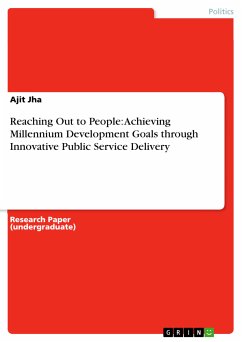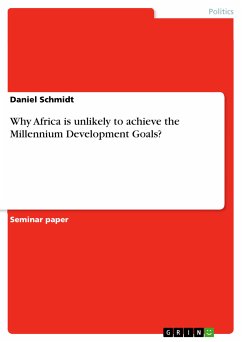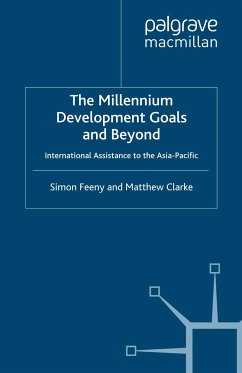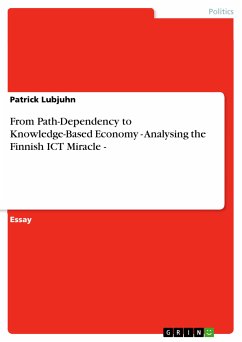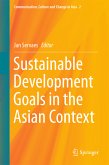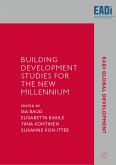Research Paper (undergraduate) from the year 2010 in the subject Politics - International Politics - Topic: Development Politics, grade: None, , language: English, abstract: The Millennium Declaration at the U.N in 2000 set ambitious targets to be achieved by 2015 against global poverty and hunger, illiteracy, gender inequality, child and maternal mortality, HIV/AIDS and other communicable diseases. However, there are several constraints and challenges in meeting these goals. The challenges are primarily of resources, infrastructure and the delivery mechanism. They are inter-related and the successful accomplishment of the MDGs calls for concerted efforts at addressing these challenges together. In other words, sound delivery mechanism can only be built on a strong infrastructure which again is not possible in the absence of adequate finances. A temporary aid over several years if utilized optimally can lead to permanent rise in productivity. In agriculture, the experience shows that with little cost of inputs in terms of fertilizer and high yielding varieties of seeds, the return is spectacular. For nations like India or even the other developing nations, healthcare challenges must be met through innovative science and technology mediated public delivery mechanism. Innovative approaches like e-health, m-health and telemedicine has the potential for improving seemingly intractable problems in health care provision such as limited access and uneven quality of care, as well as those attributed to cost. ICT could be used in fighting against sexually transmitted diseases and maternal and childcare through the dissemination of information and sensitization. However, ICT alone cannot provide the healthcare delivery, therefore, the best strategy in meeting the healthcare goals is to adopt an all inclusive approach in the strategic alignment of ICT and healthcare stakeholders.

